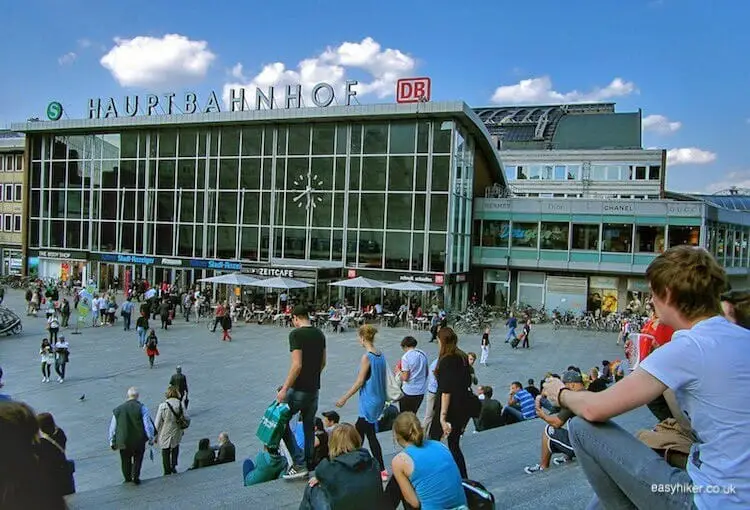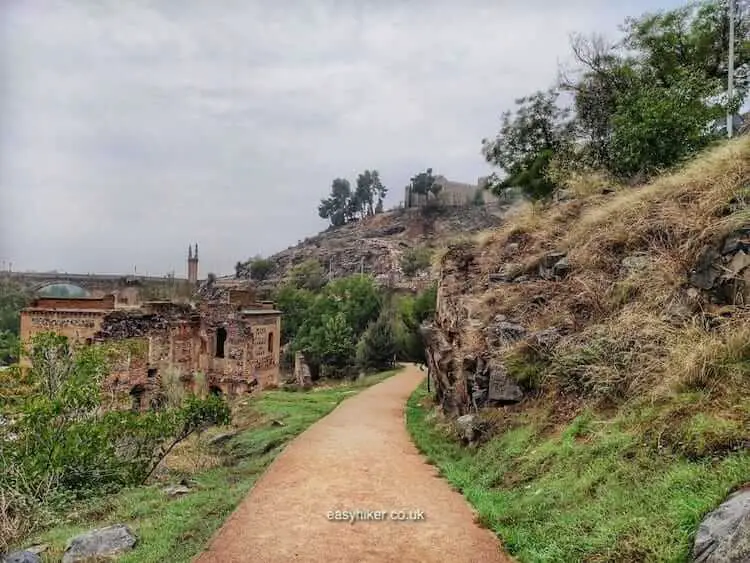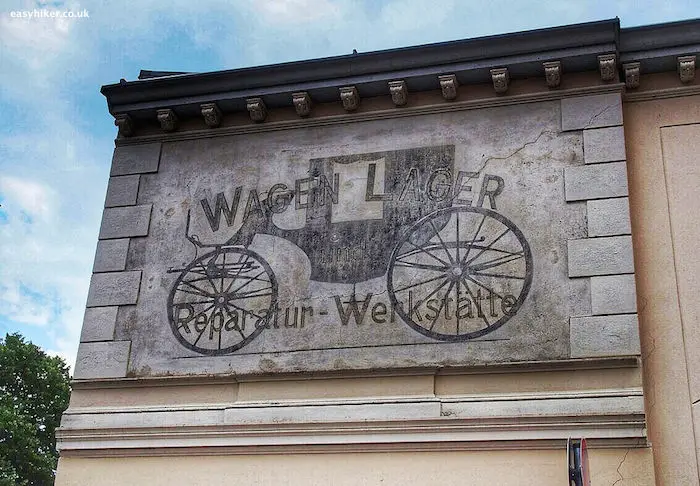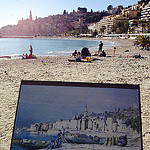If you have seen a Bible movie at any time in the last few decades that was shot on a proper location rather than a soundstage, there is a good chance that Matera was in it.
In fact, Matera – located in the southern Italian region of Basilicata – stood in so frequently for the true Capital Of The Bible that it has become known as cinema’s “Little Jerusalem”.
Matera played that role in sword-and-scripture epics such as the 2016 remake of Ben Hur and Bruce Beresford’s King David (Richard Gere), but most famously in two straightforward adaptations of the Gospel: Pier Paolo Pasolini’s The Gospel According to Saint Matthew (1964) …

… and Mel Gibson’s The Passion of the Christ (2004).
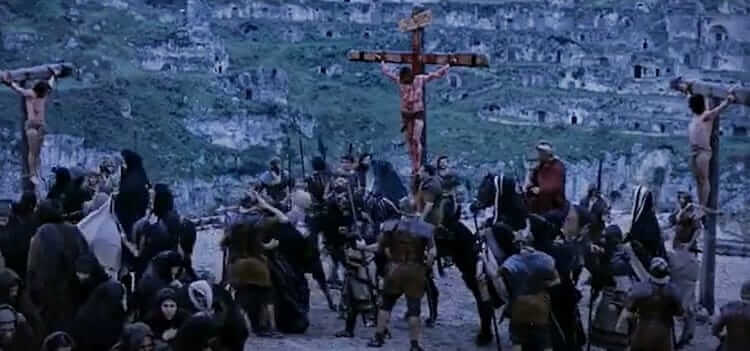
Pasolini, the austere art-house stylist and Marxist intellectual from Italy, and Mel Gibson, Catholic fundamentalist and king of the Hollywood schlockbuster: a stranger pair of movie-making bedfellows may not exist, but their two films used the same Matera locations for the same purposes.
A Matera Movie Walk
The Vico Solitario served both directors as a backdrop for large crowd scenes, …
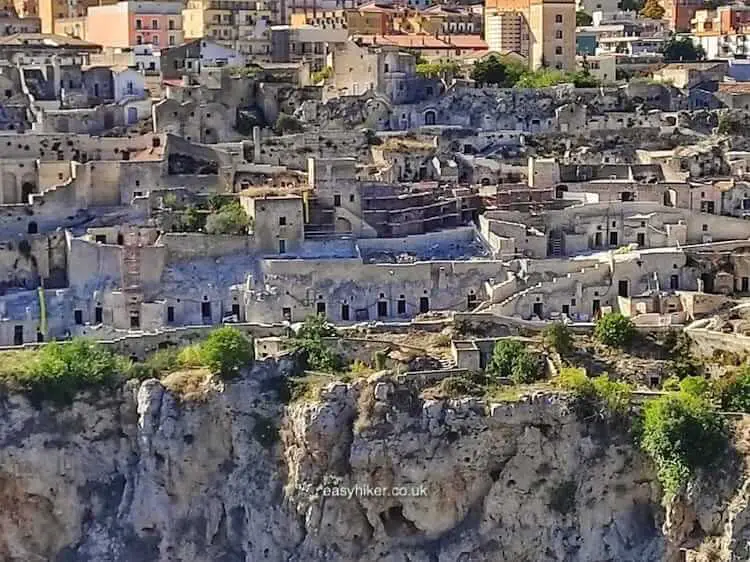
… while both of them used the Murgia Timone viewing point on the far side of the Gravina Canyon for the crucifixion …
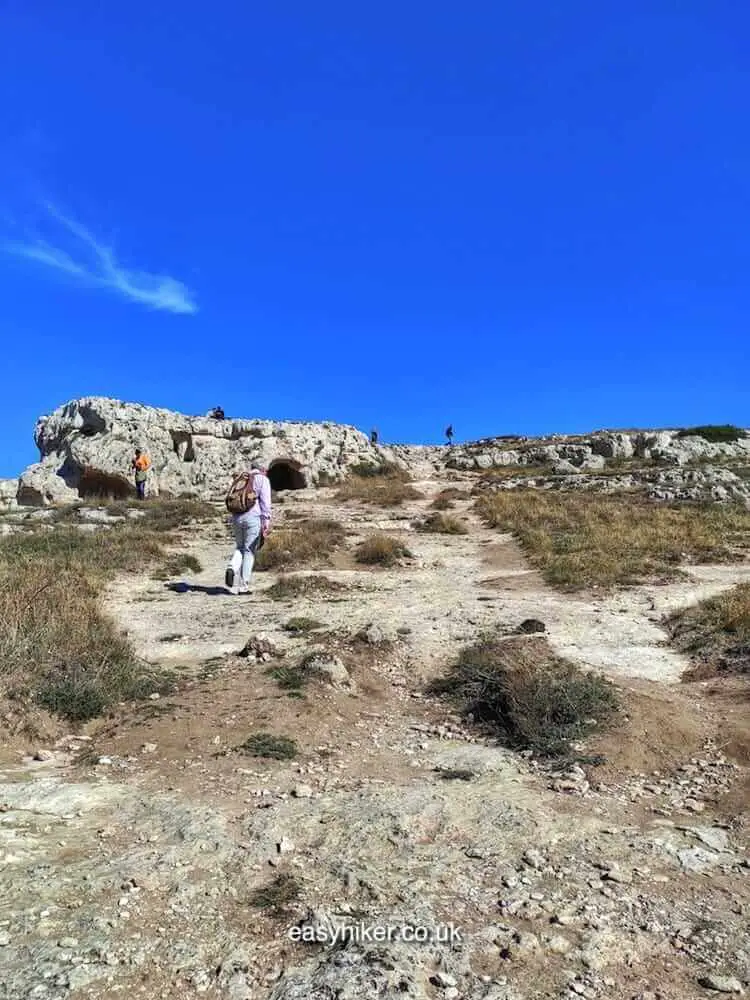
… and the Porta Pistola for the Gates of Jerusalem.

This piazza on Matera’s city wall is currently the site of a major urban reconstruction project, which is why we only got in a sideways shot.
A still shows what the Porta Pistola looked like when Pasolini’s film made it come to life.
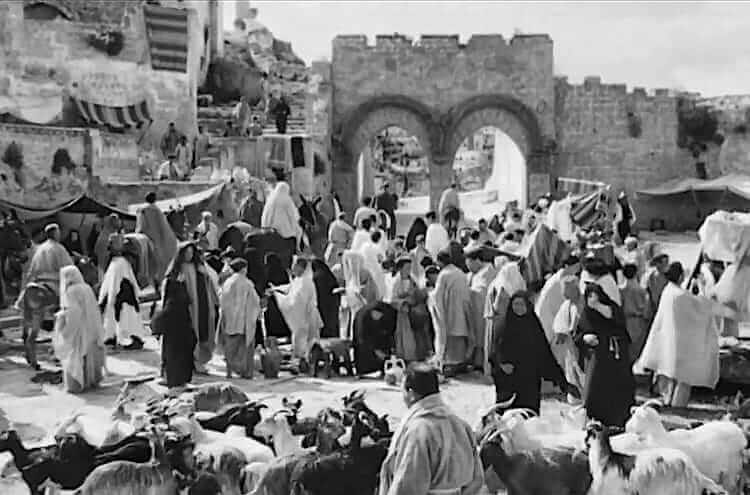
Mel Gibson always denied that his choice of locations was inspired by Pasolini, but there is no question who came to Matera first.
In fact, Pasolini was the first director who thought of using Matera as a stand-in for Jerusalem. It is easy to see today what appealed to him, in the light of his own film as well as all the movies that followed, but it would have been anything but an obvious choice back then.
Not having found a sufficiently authentic scenery for his film while location-hunting across the Middle East, Pasolini eventually decided to abandon historical accuracy in favour of a deeper truth.
Seen in this light, the archaic townscape of Matera must have appeared to provide the perfect metaphor for a pre-Christian world before the advent of divine redemption.
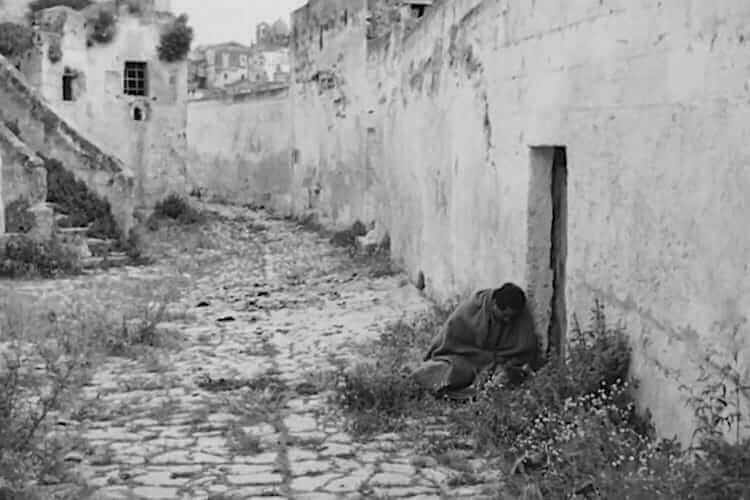
For the way of the cross, Pasolini combined locations in downtown streets such as Via Lombardi and Via Fiorentini …
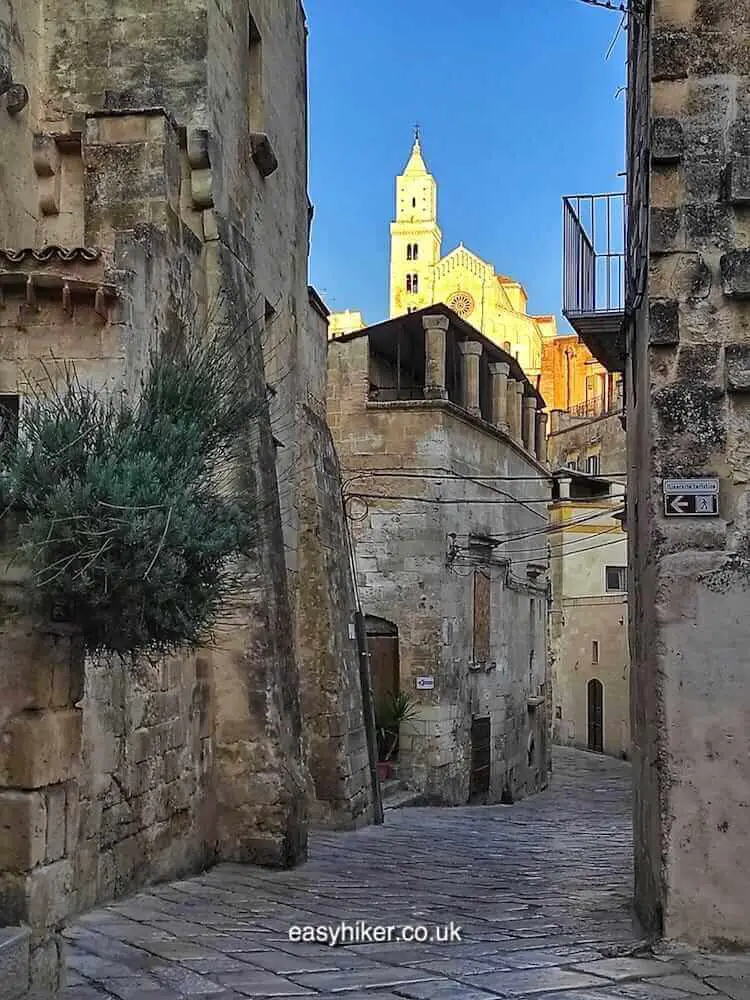
… with the narrow arches of the Via Muro …

… and the same street’s sections higher up the slopes …
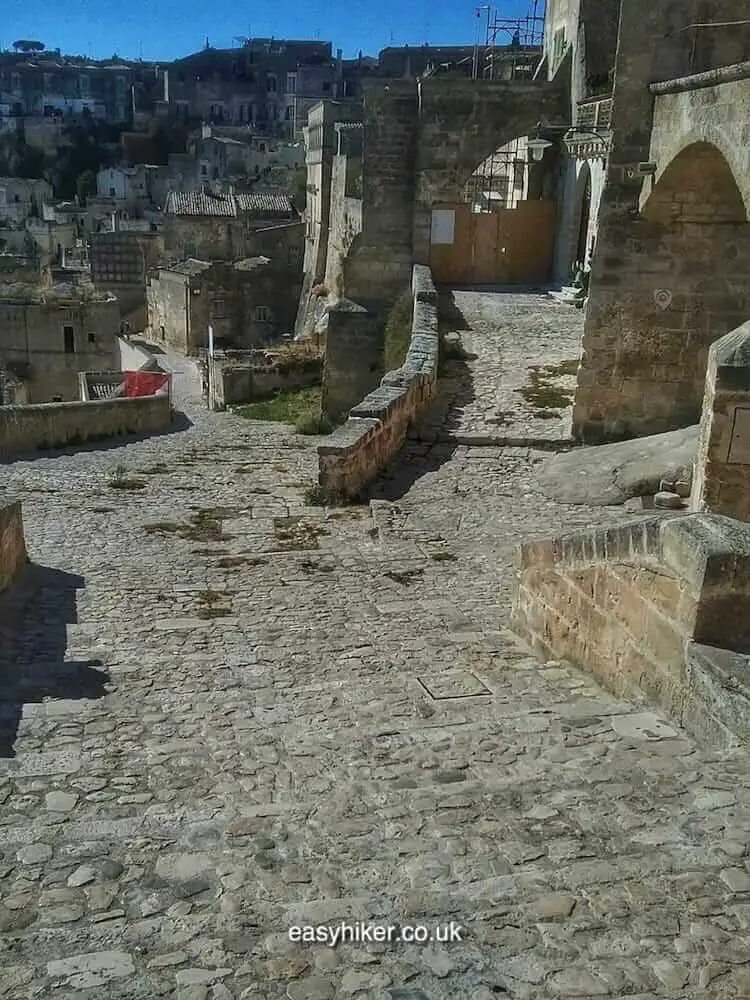
… that were also used later for the same purpose in Mel Gibson’s film.
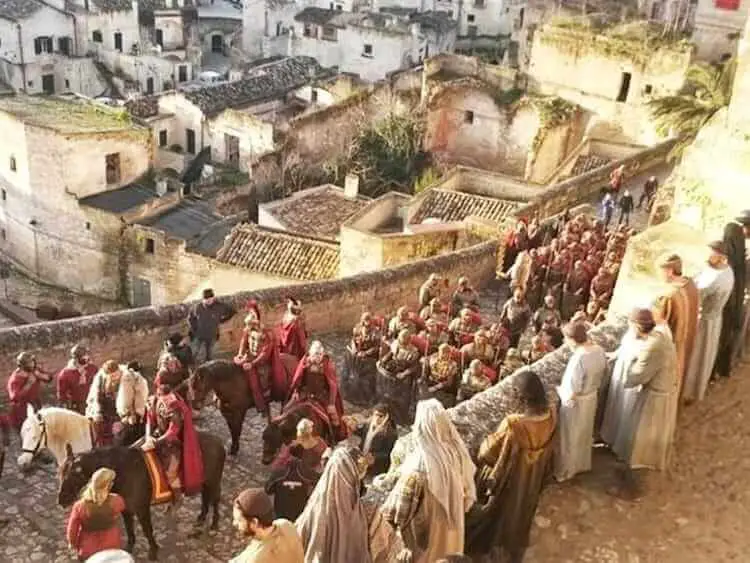
Pasolini also came up with the idea of staging multiple scenes on the other side of the Gravina Canyon, near the Murgia viewing point, where the Matera panorama could be used as a highly effective scenic backdrop.
This view provided the setting for the grand finale of the film, the crucifixion …
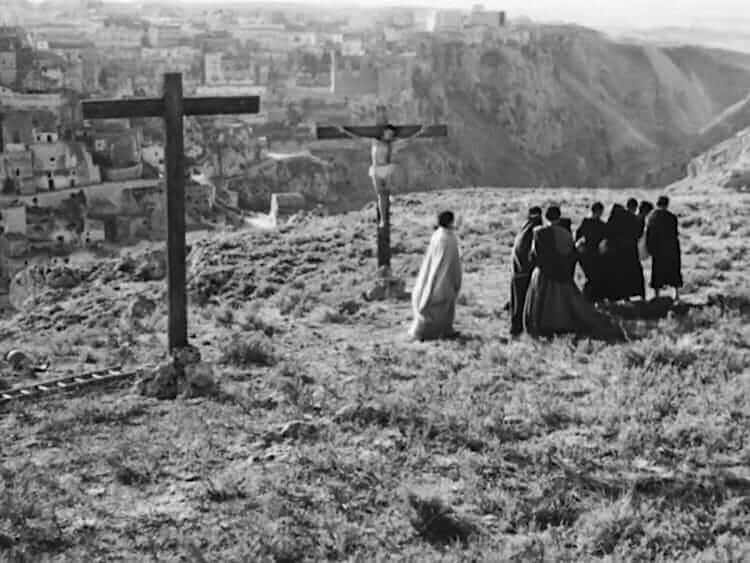
… and the resurrection.
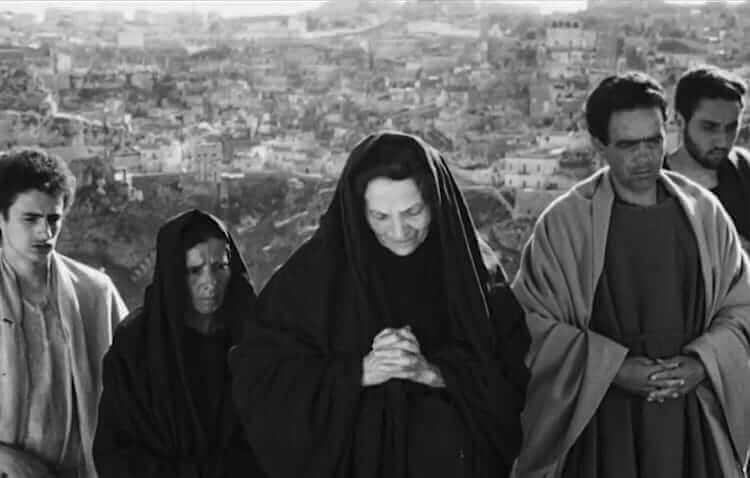
Again, the very same spot was used by Mel Gibson.
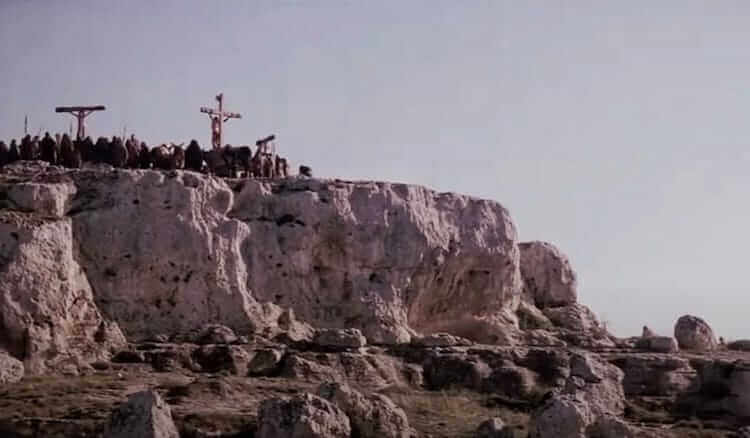
Almost certainly, it was Pasolini’s The Gospel According to Saint Matthew that first drew the world’s attention to the stark beauty of Matera.
This film, winner of the Grand Jury’s prize at the Venice Film Festival and nominated for three Oscars, marked the all-important first step on Matera’s long way from the malaria-ridden “national disgrace” of the immediate post-WWII years to European Capital of Culture.
Cinema played a key role in the first chapter of this journey: in the late 1940s, the documentaries of the neo-realist director Carlo Lizzani had put the spotlight on the plight of Italy’s southern regions …
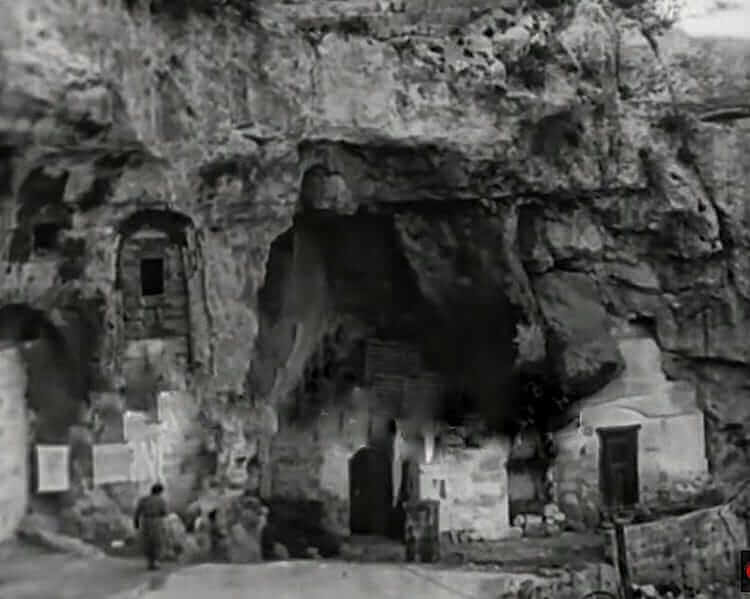
… and on the struggle of their inhabitants to preserve human pride and dignity under inhuman living conditions.
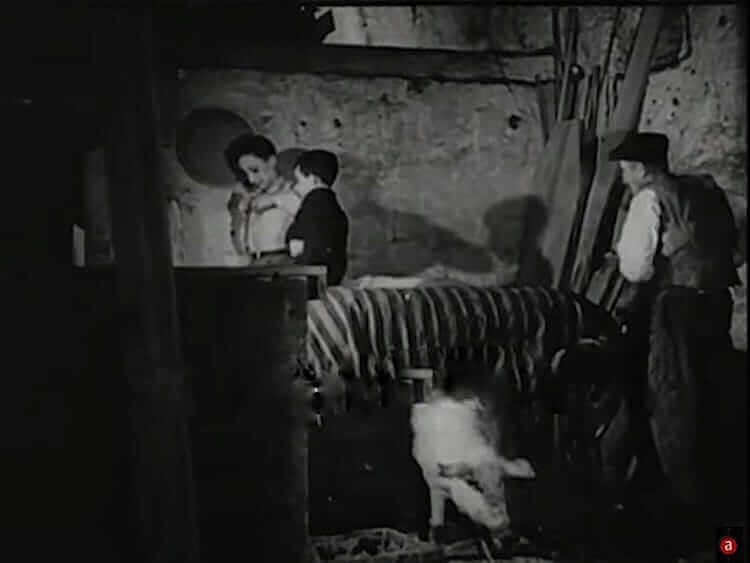
Seventy years later, cinema was to stage this journey’s climax, too.
In 2021, Matera joined some of the world’s most glamorous destinations – places such as Rio de Janeiro, Paris and Monte Carlo – as the location for a spectacular stunt in a James Bond movie (the opening sequence of “No Time To Die”).
If the award of UNESCO’s World Heritage status and the nomination as European Capital of Culture were the equivalent of a knighthood for tourist destinations, this was something like a more popular prize – an Academy Award, perhaps.
Matera’s story of redemption has been given a fittingly cinematic conclusion.

